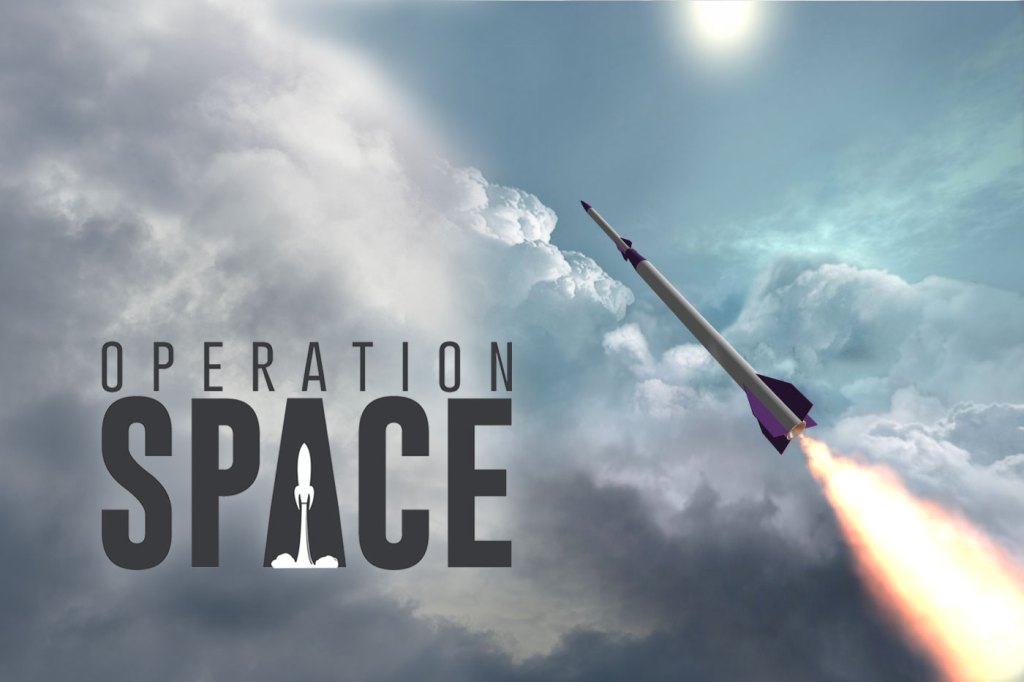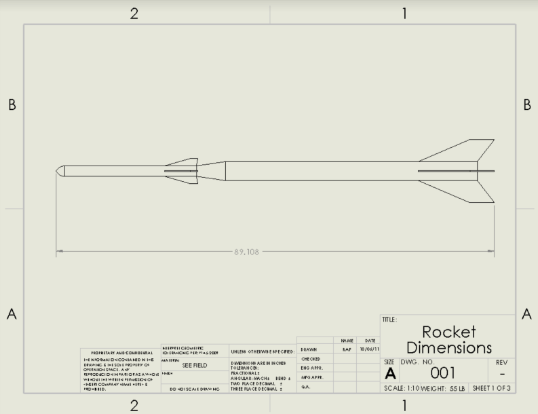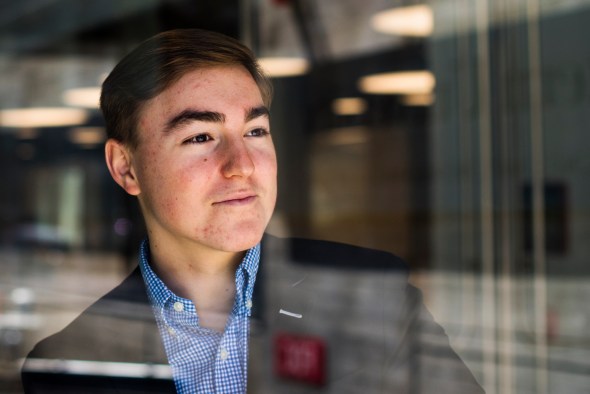Northeastern students want to break world record for highest altitude reached by a rocket

On March 4, 2017, a team of 70 college students launched a rocket that reached 144,000 feet—the highest altitude ever achieved for a vehicle designed and manufactured solely by students.
Inspired by the accomplishment, another group of students founded Operation Space with the goal of beating that record. The team, which includes three Northeastern students, plans to launch its own rocket in August. Their goal is to reach 150,000 feet, and possibly the border between Earth’s atmosphere and outer space, known as the Kármán line.
Operation Space will assemble and test its rocket in July at the former Grumman production facility in Bethpage, New York—the same hanger where the original Lunar Module was built. The official launch will take place in August at a location that has not yet been determined, but will likely be somewhere in the desert Southwest.
The project takes on the feeling of a hackathon—a sprint-like event in which a large number of computer programmers meet to design usable software. In this case, students are under a time crunch of just a few months to assemble a rocket that aims to break a world record. Since May, members of Operation Space have collaborated remotely to design the rocket, research its components, and order the necessary parts.
Assembling the team
In May, Operation Space founder Joshua Farahzad contacted Eliana Berger, an incoming freshman at Northeastern. Together they built a team of aerospace engineers, business leads, and developers by combing through university clubs, school departments, and LinkedIn.

By June 1, the final roster included 40 students from different U.S. universities and high schools. Each student accepted into Operation Space was screened for time commitment, interest in the project, and individual skills, ensuring there were no weak links in the chain. Students were then divided into technical or business teams, each of which received weekly assignments via email and had weekly conference calls to check on their progress.
Of Operation Space’s 40 members, three are undergraduate students at Northeastern: Berger, Keith Corso, and Hugh Ferguson. As members of the business team, they are responsible for fundraising $20,000 by July. The money raised will go toward materials for the rocket as well as travel expenses for team members going to Grumman Hangar in July and the rocket’s launch in August.
“We are not backed by a single investor like most student teams are,” Berger said. “We are responsible for securing all of our own sponsorships and funding ourselves. That’s why it’s such a unique team.”
Fortunately, the student-lead organization has a couple of major sponsors, including SpaceX, a private design company that manufactures and launches advanced rockets and spacecrafts.
“SpaceX actually likes our project so much that they not only agreed to support us financially, but we also get to conference with their engineers,” Berger said. The team had a design meeting with SpaceX engineers on June 20, where they showed off simulations of the rocket and got real-time feedback.
SpaceX actually likes our project so much that they not only agreed to support us financially, but we also get to conference with their engineers.
Eliana Berger, incoming freshman and Operation Space business lead
Currently, Operation Space has raised $5,000, which is enough for materials to launch a single rocket, depending on the sophistication of its parts, Berger said. But the goal is to launch two rockets to increase the chance of beating the world record. Additional funding would also give the project some cushion to troubleshoot, in case the team encounters problems with the rocket’s assembly.
A financial obstacle
Not having a sole investor presents both challenges and opportunities for Operation Space. “If you start a company or create product at a university, you’re limited to the resources of that school,” said Corso, who is the team’s head of corporate sponsorship. “With this project, we’re really able to take every resource we have and throw it toward the project. We are stronger as one—Duke, MIT, and Stanford all have really awesome resources as well as every other college on board. It’s just so powerful.”

In addition to SpaceX, DS SolidWorks, a spatial software and design company, gave each technical member of Operation Space free design software to simplify interactions between the development teams, as the entire project is being done remotely.
The team has also leveraged its connections to NASA. As a government agency, it can’t offer financial support, but many students at Operation Space have connections to the space agency through internships or research conducted at their universities. Taking advantage of those relationships, a few of NASA’s aeronautical engineers have dedicated some of their time and expertise to helping the team.
Ferguson, who is responsible for the organization’s web development, said he continues to be inspired by the project. “Our team consists of students from many different backgrounds, from a PhD student at Stanford to an aerospace student in Puerto Rico,” he said. “It’s really shown us the power of collaboration that can take place across colleges and countries.”




